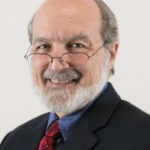AAC Peer Support Models
Bob Williams and Lateef McLeod describe an initiative on peer support models for people who use AAC
Bob Williams and Lateef McLeod describe an initiative on peer support models for people who use AAC
Mike Hipple shares his personal story of realizing how grief affects his communication and recommendations for professionals on how to support people who use AAC with grief and loss.

Today we honor, Lew Golinker! As an attorney and advocate, Lew Golinker has been instrumental in advocating for funding of speech-generating devices for people who use AAC in the United States. He was a key figure in the development of the funding mechanism for speech-generating devices through Medicare and Medicaid opening access to thousands of people who were and are in need of equipment. At the same time, Lew is a generous person, happy to advocate for anyone who's experienced an insurance denial for a speech-generating device. We can't overstate our gratitude to Lew for helping our community. Read more to learn about Lew's experiences as an attorney advocating for decades for people who use AAC.

Ben Gibbs, a person that uses AAC, shares their experiences at ISAAC Conference - Cancún

Mike Hipple shares his suggestion for making homecoming week events in high school accessible to people who use AAC
Thanh Diep shares all about her personal experiences as a person who uses AAC with insurance funding a new speech-generating device (SGD).

Today, we honor Gregg Vanderheiden. As a graduate student, Gregg invented a speech-generating device. He played an important role in both the definition of the field of AAC and the formation of ISAAC. Gregg founded the TRACE center where he directed projects that were instrumental in accessibility features for the past 50 years.
Meggin Nunamaker describes the Emotional Effects of using an AAC system as a person who uses AAC.
Mateo Moreno shares his experience of sharing his story as a person who uses AAC with children to raise awareness about all the ways people communicate.
Hannah Foley shares her personal experiences of navigating higher education as a person who uses AAC in this new SpeakUp! & AACT! post
There’s a broad range of strategies and devices that individuals may use for communication if their speech isn’t functional.
Read MoreJoin us in our mission to enhance the lives of people with complex communication needs.
Read MoreFind out about events and webinars of interest to the AAC community!
Read More